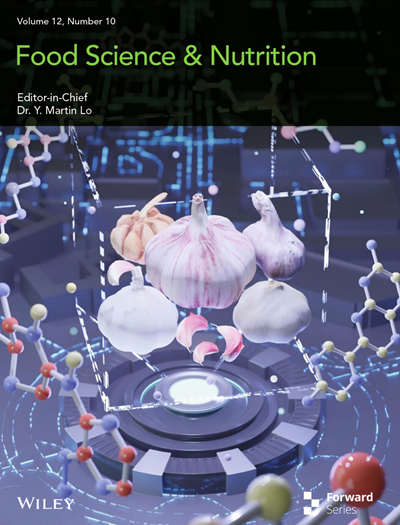摘要
麻风树作为一种有效的药剂和功能性成分备受关注。我们的目的是检测麻风树几种部分(果实、叶子和树枝)的化学成分和生物活性。生物活性的评估包括抗氧化性、酶抑制作用、诱变/反诱变作用和抗菌功效。抗氧化能力的评估采用了多种检测方法,包括 DPPH、ABTS、CUPRAC、FRAP、磷钼和金属螯合。采用 HPLC-ESI-MS/MS 方法对提取物的化学成分进行了鉴定和定量。研究了对一些酶的抑制作用,包括 AChE、BChE、酪氨酸酶、淀粉酶和葡萄糖苷酶。Ames 试验用于评估植物提取物的致突变性和抗突变性。此外,还采用肉汤微量稀释法评估了萃取物可能对微生物产生的抗菌作用。树枝的甲醇提取物显示出卓越的抗氧化能力(DPPH:388.39 mg TE/g;ABTS:701.50 mg TE/g;CUPRAC:459.05 mg TE/g;FRAP:264.99 mg TE/g)。树枝的甲醇提取物显示出最高的酪氨酸酶抑制活性(61.91 毫克 KAE/克)。通过 HPLC-ESI-MS/MS 分析,共检测到 40 种代谢物,主要是黄酮类化合物。在 Ames 试验中,受试提取物没有显示出诱变潜能。抗突变试验表明,小枝和叶片中的甲醇和乙酸乙酯提取物对公认的诱变剂诱导的框架转换和碱基对置换突变特别有效。代谢活化系统将这些强大的活性放大到了 85% 到 98% 的抑制率。抗菌试验结果表明,在 6.25 至 0.195 毫克/毫升的剂量范围内,麻风树叶都具有抗菌效果,尤其是对黄喉沙雷氏菌、蜡样芽孢杆菌、白色念珠菌和金黄色葡萄球菌有效。我们的研究结果表明,P. mahaleb 可以作为一种多功能原料,用于开发促进健康的应用,包括药物、药妆和营养保健品。

Prunus mahaleb has garnered attention as a potent medicinal agent and functional component. We aimed to detect the chemical composition and biological activities of several parts (fruit, leaves, and twigs) of P. mahaleb. Biological activities were assessed for antioxidant properties, enzyme inhibition, mutagenic/antimutagenic effects, and antibacterial efficacy. Antioxidant capabilities were evaluated using various assays, including DPPH, ABTS, CUPRAC, FRAP, phosphomolybdenum, and metal chelating. The chemical constituents of the extracts were identified and quantified using the HPLC-ESI-MS/MS method. The effects of enzyme inhibition were examined on some enzymes, including AChE, BChE, tyrosinase, amylase, and glucosidase. The Ames test was used to evaluate the mutagenic and antimutagenic properties of the plant extracts. Furthermore, a broth microdilution assay was employed to evaluate the possible antibacterial effects of the extracts against microorganisms. The methanol extract of twigs showed superior antioxidant capabilities (DPPH: 388.39 mg TE/g; ABTS: 701.50 mg TE/g; CUPRAC: 459.05 mg TE/g; FRAP: 264.99 mg TE/g). The methanol extract of twigs demonstrated the highest tyrosinase inhibitory activity (61.91 mg KAE/g). A total of 40 metabolites, mainly flavonoids, were detected through HPLC-ESI-MS/MS analysis, revealing that ferulic acid, naringenin, and herniarin were the predominant compounds. In the Ames test, the tested extracts exhibited no mutagenic potential. The antimutagenicity assay demonstrated that methanol and ethyl acetate extracts from twigs and leaves were particularly efficient against frameshift and base pair substitution mutations induced by recognized mutagens. The metabolic activation system amplified these strong activities to inhibition rates ranging from 85% to 98%. The results from the antibacterial assay indicated antibacterial effectiveness at dosages between 6.25 and 0.195 mg/mL, particularly effective against Sarcina lutea, Bacillus cereus, Candida albicans, and Staphylococcus aureus. Our findings indicate that P. mahaleb can serve as a versatile raw material for the development of health-promoting applications, including medicines, cosmeceuticals, and nutraceuticals.

 求助内容:
求助内容: 应助结果提醒方式:
应助结果提醒方式:


